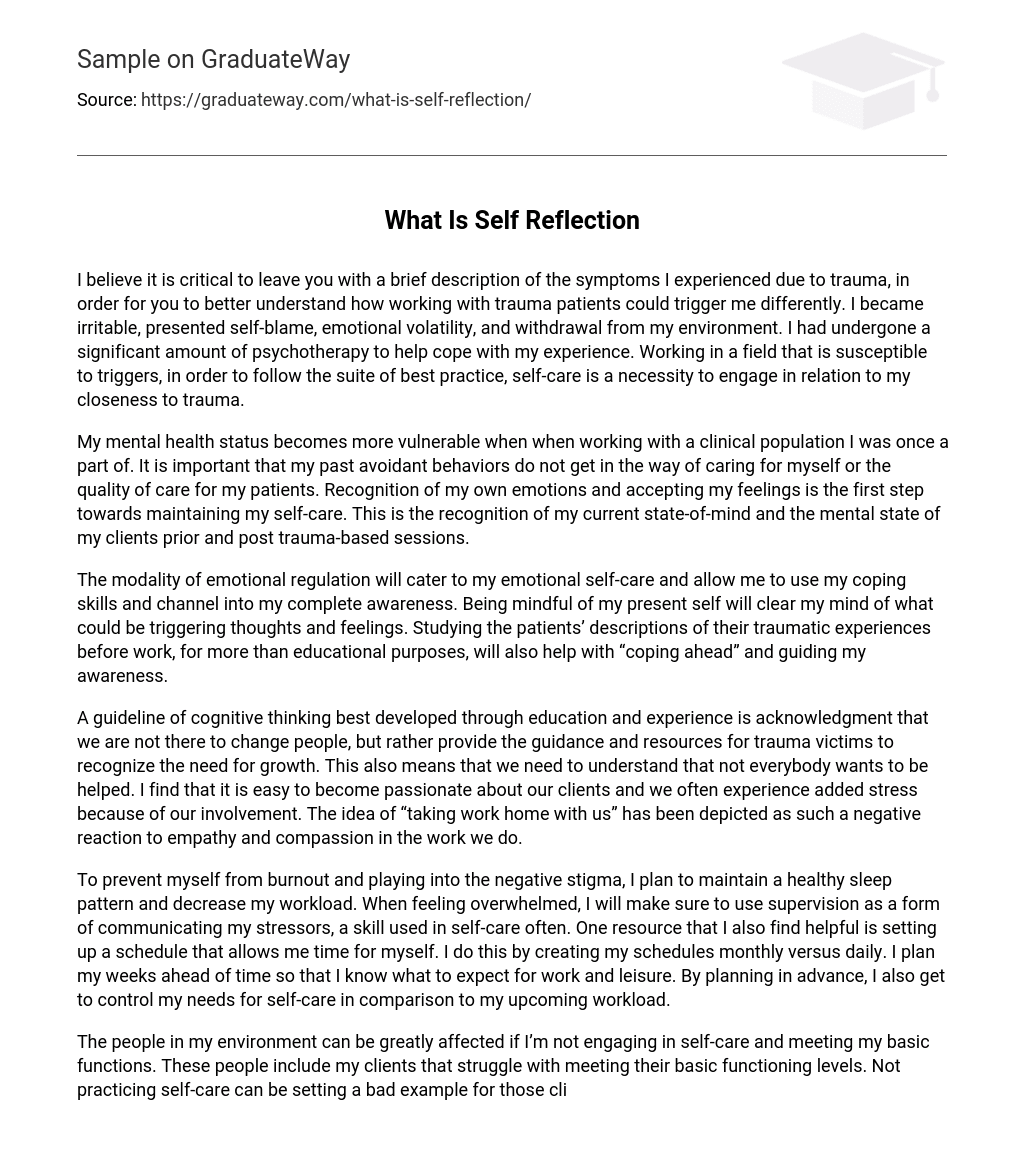I believe it is critical to leave you with a brief description of the symptoms I experienced due to trauma, in order for you to better understand how working with trauma patients could trigger me differently. I became irritable, presented self-blame, emotional volatility, and withdrawal from my environment. I had undergone a significant amount of psychotherapy to help cope with my experience. Working in a field that is susceptible to triggers, in order to follow the suite of best practice, self-care is a necessity to engage in relation to my closeness to trauma.
My mental health status becomes more vulnerable when when working with a clinical population I was once a part of. It is important that my past avoidant behaviors do not get in the way of caring for myself or the quality of care for my patients. Recognition of my own emotions and accepting my feelings is the first step towards maintaining my self-care. This is the recognition of my current state-of-mind and the mental state of my clients prior and post trauma-based sessions.
The modality of emotional regulation will cater to my emotional self-care and allow me to use my coping skills and channel into my complete awareness. Being mindful of my present self will clear my mind of what could be triggering thoughts and feelings. Studying the patients’ descriptions of their traumatic experiences before work, for more than educational purposes, will also help with “coping ahead” and guiding my awareness.
A guideline of cognitive thinking best developed through education and experience is acknowledgment that we are not there to change people, but rather provide the guidance and resources for trauma victims to recognize the need for growth. This also means that we need to understand that not everybody wants to be helped. I find that it is easy to become passionate about our clients and we often experience added stress because of our involvement. The idea of “taking work home with us” has been depicted as such a negative reaction to empathy and compassion in the work we do.
To prevent myself from burnout and playing into the negative stigma, I plan to maintain a healthy sleep pattern and decrease my workload. When feeling overwhelmed, I will make sure to use supervision as a form of communicating my stressors, a skill used in self-care often. One resource that I also find helpful is setting up a schedule that allows me time for myself. I do this by creating my schedules monthly versus daily. I plan my weeks ahead of time so that I know what to expect for work and leisure. By planning in advance, I also get to control my needs for self-care in comparison to my upcoming workload.
The people in my environment can be greatly affected if I’m not engaging in self-care and meeting my basic functions. These people include my clients that struggle with meeting their basic functioning levels. Not practicing self-care can be setting a bad example for those clients, allowing them to overlook the importance. Maintaining a healthy diet and exercise pattern will give me more energy to work long days. I make sure I have breakfast in the morning, take walks when needed to keep my energy levels up, and sit when needed to prevent exertion. This also opens a positive space for my clients and motivation to follow patterns.
Time with my dog Lucy is something I enjoy more than most activities. When stressed or upset, Lucy reacts in a manner that always brings a smile to my face. On days where I just need to be alone, and escape from the everyday stressors, I do this by spending time with Lucy. We go to a quiet park, the beach, and any other place that is soothing to both me and her. When taking her on walks I am able to clear my head and practice the skill of mindfulness. It is a great stress relief and very fun to do. It also allows for separation of work and personal responsibilities.





